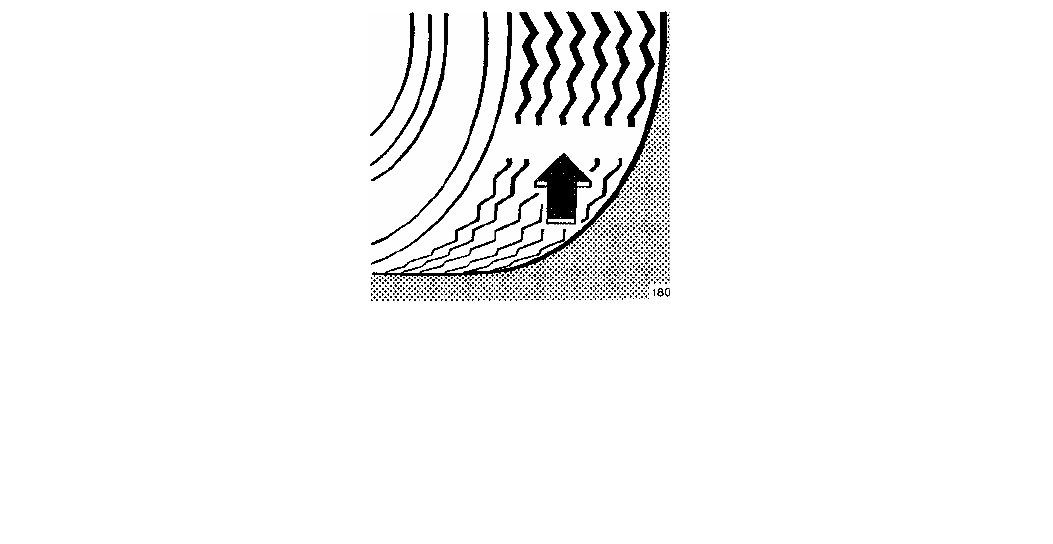
18
Caution!
When driving down long and steep
grades, relieve the load on the brakes
by shifting into "4", "3", "2" or "1".
This helps prevent overheating of the
brakes and reduces brake pad wear.
After hard braking, it is advisable to
drive on for some time, rather than
immediately parking, so the air stream
will cool down the brakes faster.
Tires
Tread wear indicators (TWI) are
required by law. These indicators are
located in six places on the tread
circumference and become visible at a
depth of approx. 2 mm (1/16 in), at
which point the tire is considered worn
and should be replaced.
The tread wear indicator appears as a
solid band across the tread.
Warning!
Do not allow your tires to wear down
too far. With less than 3 mm (1/8 in)
of tread, the adhesion properties on a
wet road are sharply reduced.
Depending upon the weather and/or
road surface (conditions), the tire
traction varies widely.
Specified tire pressures must be
maintained. This applies particularly if
the tires are subjected to high loads
(e.g. high speeds, heavy loads, high
ambient temperatures).
Warning!
Do not drive with a flat tire. A flat
tire affects the ability to steer or
brake the vehicle. You may lose
control of the car. Continued driving
with a flat tire or driving at high
speed with a flat tire will cause
excessive heat build-up and possibly
a fire, or tire blowout.
Aquaplaning
Depending on the depth of the water
layer on the road, aquaplaning may
occur, even at low speeds and with new
tires. Avoid track grooves in the road
arid apply brakes cautiously in the rain.


















